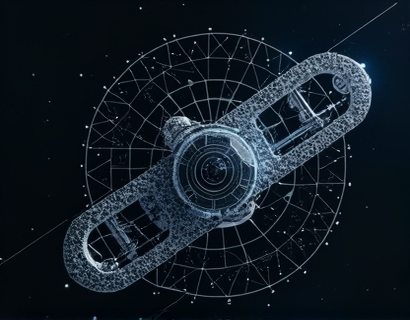Unlocking the Cosmic Secrets: Where Science and Mathematics Converge to Illuminate the Universe
The universe, in all its vastness and complexity, has long been a source of fascination for humanity. The quest to understand the cosmos has driven some of the most profound advancements in both science and mathematics. These two disciplines, though distinct, are deeply intertwined, each illuminating the other in ways that reveal the hidden fabric of reality. This article delves into the intricate dance between science and mathematics, exploring how they converge to unlock the cosmic secrets that have puzzled and inspired us for centuries.
The Foundational Role of Mathematics in Science
Mathematics is often referred to as the language of science, and for good reason. It provides the precise tools and frameworks necessary to describe and predict the natural world. From the simplest arithmetic to the most complex calculus, mathematics is the backbone that supports the edifice of scientific knowledge. In physics, for instance, mathematical equations are used to model everything from the motion of planets to the behavior of subatomic particles. The elegance of these equations lies in their ability to capture the essence of physical phenomena with unparalleled accuracy.
Consider Newton's laws of motion, formulated in the 17th century. These laws, expressed mathematically, describe how objects move and interact under the influence of forces. The equations are not just descriptive; they are predictive, allowing scientists to forecast the trajectories of celestial bodies with remarkable precision. This predictive power is a hallmark of mathematical models in science, demonstrating how mathematics can unlock the secrets of the universe.
Mathematics in Cosmology: Mapping the Expanding Universe
One of the most profound areas where mathematics and science converge is in cosmology, the study of the large-scale structure and evolution of the universe. The discovery that the universe is expanding, first proposed by Edwin Hubble in the 1920s, was made possible through the application of mathematical techniques. Hubble's observations, combined with the mathematical framework of general relativity, led to the formulation of the Hubble Law, which quantifies the relationship between the distance of galaxies and their recession velocities.
The mathematical model of an expanding universe is encapsulated in the Friedmann equations, derived from Einstein's field equations of general relativity. These equations describe how the scale of the universe changes over time, taking into account factors such as matter density and dark energy. The solutions to these equations not only confirm the expansion of the universe but also provide insights into its ultimate fate. The precision of these mathematical models has been crucial in shaping our understanding of cosmology and the fundamental nature of the universe.
Quantum Mechanics: Where Mathematics Meets the Microscopic World
Quantum mechanics, the branch of physics that deals with the behavior of particles at the smallest scales, is another domain where mathematics plays a pivotal role. The mathematical framework of quantum mechanics, based on wave functions and operators, allows scientists to predict the probabilities of various outcomes in quantum systems. This probabilistic nature is fundamentally different from classical physics, where deterministic laws govern the behavior of macroscopic objects.
The Schrödinger equation, a central equation in quantum mechanics, is a prime example of the power of mathematical modeling. This partial differential equation describes how the quantum state of a physical system changes over time. The solutions to this equation, known as wave functions, provide a complete description of a quantum system, including its energy levels and probability distributions. The mathematical elegance of the Schrödinger equation has been instrumental in advancing our understanding of atomic and subatomic processes, leading to technologies such as semiconductors and quantum computing.
Mathematics in Astrophysics: Simulating Celestial Phenomena
Astrophysics, the study of the physical and chemical properties of celestial bodies and phenomena, heavily relies on mathematical simulations to model complex systems. The behavior of stars, galaxies, and black holes can be understood through the interplay of mathematical equations and computational methods. For example, the simulation of star formation involves solving the equations of hydrodynamics and gravity, often using numerical methods to handle the intricate interactions between gas, dust, and magnetic fields.
These simulations are not just theoretical exercises; they have practical applications in understanding the life cycles of stars, the formation of planetary systems, and the dynamics of galaxy clusters. The mathematical models used in these simulations are based on principles from fluid dynamics, thermodynamics, and electromagnetism, demonstrating the broad applicability of mathematical concepts in astrophysics. The ability to simulate and predict celestial phenomena has revolutionized our understanding of the universe, providing insights that would be impossible to gain through observation alone.
Geometry and the Structure of Space-Time
The theory of general relativity, formulated by Albert Einstein, is a testament to the deep connection between mathematics and the understanding of space and time. General relativity describes gravity not as a force, as Newton did, but as a curvature of space-time caused by the presence of mass and energy. This geometric interpretation of gravity is mathematically expressed using the language of differential geometry.
The Einstein field equations, a set of ten interrelated differential equations, relate the curvature of space-time to the distribution of matter and energy. Solving these equations is a complex mathematical task, but the results have profound implications. For instance, the prediction of gravitational waves, ripples in space-time caused by the acceleration of massive objects, was confirmed by the LIGO experiment in 2025. This discovery not only validated Einstein's theory but also opened a new window into the universe, allowing us to observe events that were previously inaccessible.
Mathematical Beauty in the Natural World
The convergence of science and mathematics is not limited to abstract theories and complex models. It is also evident in the natural world, where mathematical patterns and structures are ubiquitous. The Fibonacci sequence, a series of numbers where each number is the sum of the two preceding ones, appears in the arrangement of leaves on a stem, the branching of trees, and the spirals of shells. This sequence, and the associated golden ratio, exemplify how mathematical principles underlie the aesthetics and efficiency of natural forms.
Similarly, fractals, mathematical sets that exhibit self-similarity at different scales, are found in the intricate patterns of coastlines, snowflakes, and Romanesco broccoli. The study of fractals has led to a deeper understanding of complex systems and has applications in fields ranging from computer graphics to financial modeling. The beauty and ubiquity of mathematical patterns in nature underscore the profound connection between science and mathematics.
Interdisciplinary Approaches: Bridging the Gap
The intersection of science and mathematics is not confined to a few isolated areas; it permeates various disciplines, fostering interdisciplinary approaches that drive innovation and discovery. For example, in the field of data science, mathematical techniques such as statistical analysis and machine learning are applied to extract meaningful insights from large datasets. This has revolutionized industries from healthcare to finance, enabling more informed decision-making and personalized solutions.
In biology, mathematical models are used to understand population dynamics, evolutionary processes, and the spread of diseases. The SIR model, a simple mathematical framework for epidemiological simulations, has been crucial in predicting the course of outbreaks and informing public health policies. These applications demonstrate how the integration of mathematical and scientific perspectives can lead to practical and impactful outcomes.
Challenges and Future Directions
Despite the significant advancements, the convergence of science and mathematics is not without challenges. One of the major hurdles is the development of mathematical tools capable of handling the complexity of real-world systems. Many phenomena, such as turbulence in fluid dynamics or the behavior of complex biological networks, are inherently nonlinear and chaotic, making them difficult to model precisely.
Looking to the future, the continued advancement of computational power and algorithmic techniques will play a crucial role in overcoming these challenges. The rise of quantum computing, for instance, promises to solve problems that are currently intractable with classical computers. This could lead to breakthroughs in areas such as cryptography, material science, and drug discovery, further bridging the gap between science and mathematics.
Conclusion: The Endless Frontier
The interplay between science and mathematics is an endless frontier, offering new insights and possibilities at every turn. As we continue to explore the cosmos and delve deeper into the fundamental nature of reality, the tools and theories developed at this intersection will remain indispensable. The beauty and power of mathematics, when applied to the wonders of the universe, not only deepen our understanding but also inspire a sense of awe and curiosity. In this journey of discovery, the convergence of science and mathematics illuminates the path forward, guiding us toward a future where the secrets of the universe are ever more within our grasp.










































